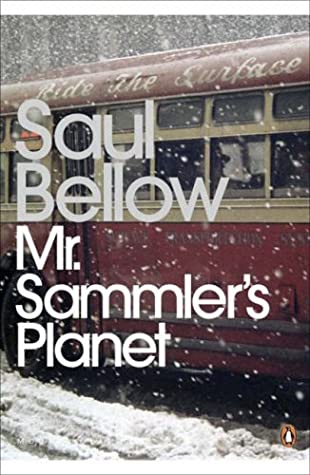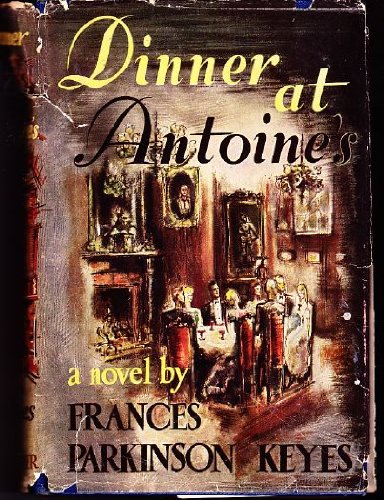
Worrywarts who fear societal collapse might be on to
something. Violent crime is rising, WWIII threatens, and a belief in the biological basis of sex gets you canceled. Students of Weimar history will notice similarities. Saul Bellow’s jaded protagonist Artur Sammler notices them in late 1960s Manhattan, too. Having seen the world collapse once in his native Poland during WWII, Sammler understands “the possibility that it might collapse twice.” Sammler relives the nightmarish suicidal impulses of civilization as his adopted Upper West Side descends into barbarity while he witnesses “petted intellectuals who attacked society” in the name of proletarian revolution, irrationality, and “perfect instantaneous freedom.”
Sammler knows from harsh experience that once the radicals have torn off society’s gossamer of civility, one can never count on its restoration. After rounding up the Jews in his Polish village, the Nazis had forced Sammler and his wife to dig their own graves before their execution. He survived the shooting; she did not. Sammler rose from the mass grave bloody—and blind in one eye—but alive. He had weathered the first collapse.
Making his way west in rags and with nothing to eat, Sammler comes upon a young Nazi whom he remorselessly kills for his food and clothing. He eventually reaches New York, where he rides out
Gotham’s late 1960s civil disintegration as a one-eyed “Anglophile intellectual Polish Jew and person of culture.”
Overt Nazi hatred had failed to extinguish Sammler and his tribe. Now he sees more insidious forces push New York’s civic collapse. Sammler blames the Big Apple’s fainthearted WASP-ocracy for not keeping order. Unlike Sammler’s indomitable will to survive, White Protestant America’s cowardly surrender sickens him. The dominant classes exhibit their self-hatred by “screaming at themselves” alongside minority mobs. Instead of beating swords into plowshares, their debauched clergy enthusiastically beat “dog collars into G strings.” Philistine Columbia students shout down Sammler’s highbrow lecture about his relationship with famous British authors.
Recently, psychiatrists declared “prolonged grief” a mental illness. One wonders how they would diagnose Sammler’s state after his self-exhumation, widower status, legal blindness, poverty, and decades of caring for his mentally ill daughter. Who has been punched in the face harder than Sammler? Granted, Dr. Fauci has reluctantly released double-masked American bed-wetters from house arrest, where they had to watch Netflix all day while complaining on Twitter. In contrast to Sammler’s endurance of lifelong ordeals, lockdown’s hardships bred weakness and crushed resilience. Sammler’s suffering endowed him with the “luxury of nonintimidation by doom.” But even he surrendered after “one more reason to live trickled out.” If only America had his fortitude.
—John Greenville

Antoine’s in New Orleans, founded in 1840 by Antoine Alciatore, is still renowned for its cuisine, oldworld charm, and demanding clientele. It also provides the setting and titular inspiration for Frances Parkinson Keyes’ bestselling mystery novel. Nearly 75 years after its publication, this novel of New Orleans manners centered on Creoles and other gentry may seem wickedly retrograde—even past redemption. In the French city of New Orleans, class, caste, and ethnic distinctions were crucial almost from its founding. Its peculiar social structures and mores persisted stubbornly, giving way to change slowly, through wars, replacements of governments, and other upheavals; some relics of the old order remain to this day.
Keyes’ novel is one of these relics: a genuine period piece, set in the ’40s but reflecting long-established older customs. Her fictional butlers perform their duties much as their slave forefathers did; critics may call her depiction of unlettered, loyal old retainers, accepting their condition, as unacceptable caricatures of Southern blacks. Keyes records their speech in rough phonetic form. Here is Tossie telling her mistress that she’s hurrying to answer the door: “Ah’se a-gwine, Miss Caresse, fas’ as ever Ah kin.” Asked if she would have noticed a concealed gun while cleaning the house, Tossie replies, “Sholy. Sholy. Wa’n’t no drawer nor neither nor box Ah di’n’ rid up fo’ de po’ li’l angel.”
Literature is of and for its time. With rare exceptions (mostly in poetry), it is conditioned by what the French critic Hippolyte Taine called “the people, the milieu, the time.” Later assessments and interpretations may shed different critical light; but the original text must remain preeminent. Keyes’ literary testimony about her time and place, acclaimed by her contemporaries for its accuracy, grows more valuable with the years. By the 1980s, New Orleans fiction writers had evinced an about-face. Ellen Gilchrist, for instance, in her short story collection, Victory over Japan, attacked the same strata of New Orleans society and won a National Book Award for it. Legions of subsequent observers, obsessed with today’s grievances, have displaced Keyes as chroniclers of the city.
—Catharine Savage Brosman
Leave a Reply